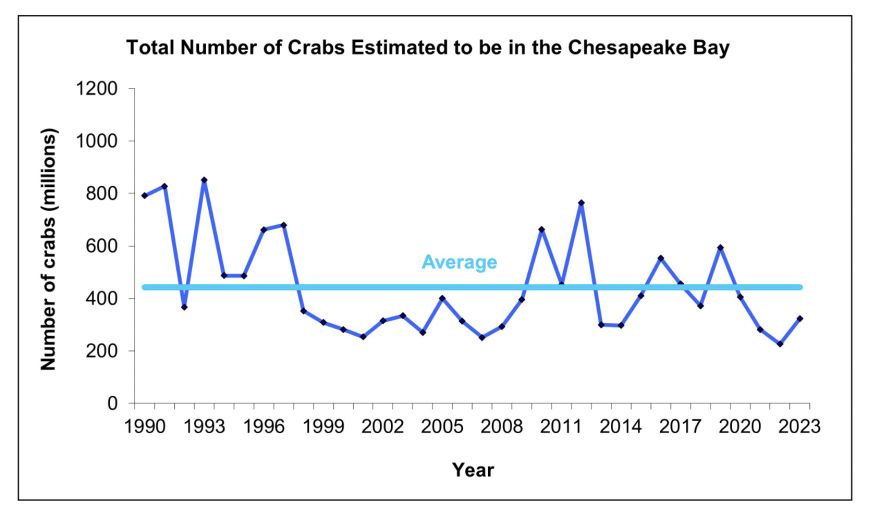Peter Nixon has been crabbing along the lower Chesapeake Bay for over 50 years. He remembers a time when there was an abundance of blue crabs.
“Crabs used to be thick enough when I first started crabbing, that you could crab in the morning and if [there] was an incoming tide, when you finished your rig, you could actually go back and fish over some of your pots again because crabs feed on incoming tide. Now, we have to let him sit two days,” Nixon explained.
The comradery in the industry has changed as well.
“There used to be six or seven crabbers everywhere you went down the river every day. We'd crab next to each other and wave, and talk and shoot the breeze,” Nixon said. “They're gone.”
But there might be hope for Virginia’s blue crab population — though numbers are still below the long-term average.
The 2023 Winter Blue Crab Dredge Survey, published jointly by Maryland’s Department of Natural Resources and the Virginia Marine Resource Commission, shows there are 323 million blue crabs living in the Chesapeake Bay. That’s a 42% increase from last year when the population was the lowest in the survey's history at 227 million.
Joe Grist, the deputy chief of fisheries management at the Virginia Marine Resources Commission, was born and raised in Norfolk. He understands the value of crabs — and not just for the Chesapeake Bay’s ecosystem, but for the livelihood of crabbers as well.
“Crabs are just absolutely amazing,” Grist said. “They're kind of like the vultures of the Bay in the sense [that] if something has passed away in the Bay … , some dead fish on the bottom, they're going to clean it up. They're going to convert it back into energy in the Bay and convert it back out to more crabs.”
Grist said the commission is seeing a good, balanced ecosystem when it comes to blue crabs.
“I have to look at the overall trend. And I think the overall trend, especially in the last 15 years, has been a steady trend for us with a lot of variables,” Grist said. “The variability is good. So, we're not really seeing any real declines at all, we're not really seeing a major uptick. What we're seeing is a good balanced fishery.”

This year, the VMRC voted to extend the harvest season into the winter. But Grist said it’s a balancing act.
“For a couple of the waterman who will continue crabbing, they may see a little bit better profit margin coming in by staying in the crabbing for November, December,” Grist said. “So, we're trying to maximize both. We see we're OK on the ecosystem side; can we maximize the optimum yield side of it now for this year?”
The Chesapeake Bay Foundation has previously reported that the blue crab commercial harvest value has ranged from $22 to $38 million annually in the commonwealth.
Nixon, the crabber, has pushed back on the commission's outlook because, although the crab population is at a sustainable level, he said it’s not at the level the industry saw in the early ’80s and ’90s. For example, in 1993, a peak of 852 million crabs were counted in the Bay.
“We need to do something different. They've over emphasized, protecting the females to the detriment of the males. They've got to go back and readjust, and create an equivalency there somehow,” Nixon said. “This whole thing is getting way out of balance when you've got to run 26 miles up to James River to find males to harvest. Because at the lower end, the crabs you catch down early on are illegal because they're dark sponge females. That's a problem.”
Nixon said he doesn't want to harm the blue crab population or take more than what's feasible for him to continue crabbing.
“I'm managing for economics, but my economics are realistic in that I can't go crabbing and not catch anything,” Nixon said. “I think about that every day. They're thinking about a threshold of sustainability. And I'm thinking about the same thing, but it's my threshold of sustainability, and I need a few more crabs than they need to sustain the species.”



